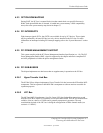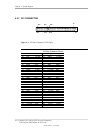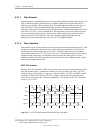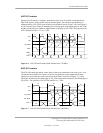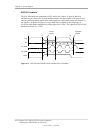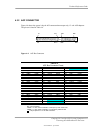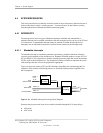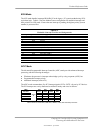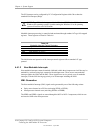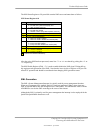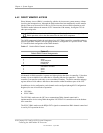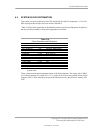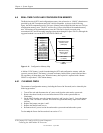
Technical Reference Guide
8259 Mode
The 8259 mode handles interrupts IRQ0-IRQ15 in the legacy (AT-system) method using 8259-
equivalent logic. Table 4-5 lists the standard source configuration for maskable interrupts and
their priorities in 8259 mode. If more than one interrupt is pending, the highest priority (lowest
number) is processed first.
Table 4-5. Maskable Interrupt Priorities and Assignments
Table 4-5.
Maskable Interrupt Priorities and Assignments
Priority Signal Label Source (Typical)
1 IRQ0 Interval timer 1, counter 0
2 IRQ1 Keyboard
3 IRQ8- Real-time clock
4 IRQ9 Unused
5 IRQ10 PCI devices/slots
6 IRQ11 Audio codec
7 IRQ12 Mouse (PS/2)
8 IRQ13 Coprocessor (math)
9 IRQ14 Primary IDE controller
10 IRQ15 Secondary IDE I/F controller
11 IRQ3 Serial port (COM2)
12 IRQ4 Serial port (COM1)
13 IRQ5 Network interface controller
14 IRQ6 Diskette drive controller
15 IRQ7 Parallel port (LPT1)
-- IRQ2 NOT AVAILABLE (Cascade from interrupt controller 2)
APIC Mode
The Advanced Programmable Interrupt Controller (APIC) mode provides enhanced interrupt
processing with the following advantages:
♦ Eliminates the processor’s interrupt acknowledge cycle by using a separate (APIC) bus
♦ Programmable interrupt priority
♦ Additional interrupts (total of 24)
The APIC mode accommodates five PCI interrupt signals (INTA-..INTE-) for use by PCI devices.
The PCI interrupts are evenly distributed to minimize latency and wired as follows:
MCP
Int. Cntlr.
PCI
Slot 1
PCI
Slot 2
PCI
Slot 3
AGP
Slot
INTA- INTA- INTD- INTC- INTB-
INTB- INTB- INTA- INTD- —
INTC- INTC- INTB- INTA- —
INTD- INTD- INTC- INTB- —
INTE- — — — INTA-
Wired
to
NOTE:
Internal functions of the MCP (USB, MAC, SMBus, Audio, IDE controllers) use INTA-.
Compaq D315 and hp d325 Personal Computers
Featuring the AMD Athlon XP Processor
Second Edition - April 2003
4-15



